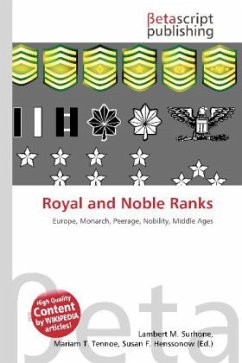Please note that the content of this book primarily consists of articles available from Wikipedia or other free sources online. Traditional rank amongst European royalty, peers, and nobility is rooted in Late Antiquity and the Middle Ages. Although they vary over time and between geographic regions (for example, one region''s prince might be equal to another''s grand duke), the following is a fairly comprehensive list that provides information on both general ranks and specific differences. Nobility is a state-privileged status which is generally hereditary, but which may also be personal only. Titles of nobility are usually associated with present or former monarchies. The term originally referred to those who were "known" or "notable" and was applied to the highest social class in pre-modern societies. In the feudal system (in Europe and elsewhere), the nobility were generally those who held a fief, often land or office, under vassalage, i.e., in exchange for allegiance and various, mainly military, services to the Monarch and at lower levels to another nobleman. It rapidly came to be seen as a hereditary caste, sometimes associated with a right to bear a hereditary title and, for example in pre-revolutionary France, enjoying fiscal and other privileges.
Bitte wählen Sie Ihr Anliegen aus.
Rechnungen
Retourenschein anfordern
Bestellstatus
Storno








